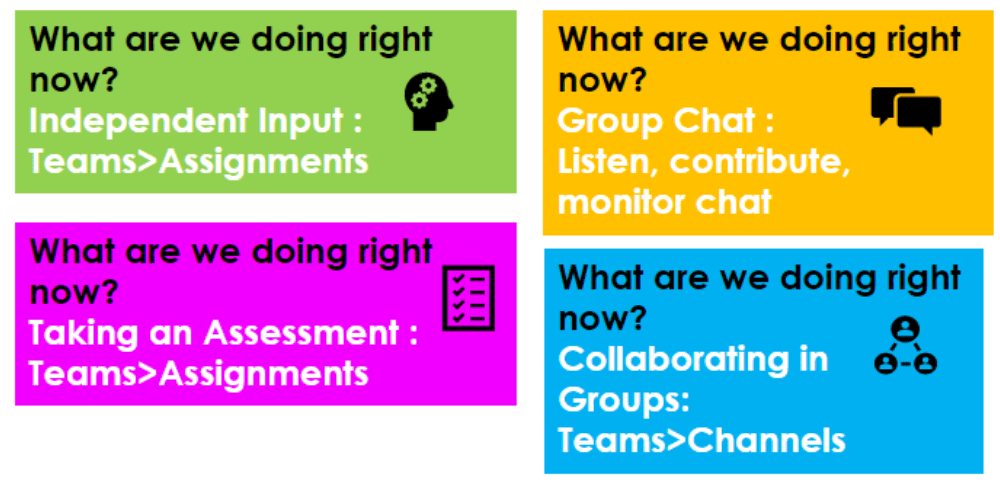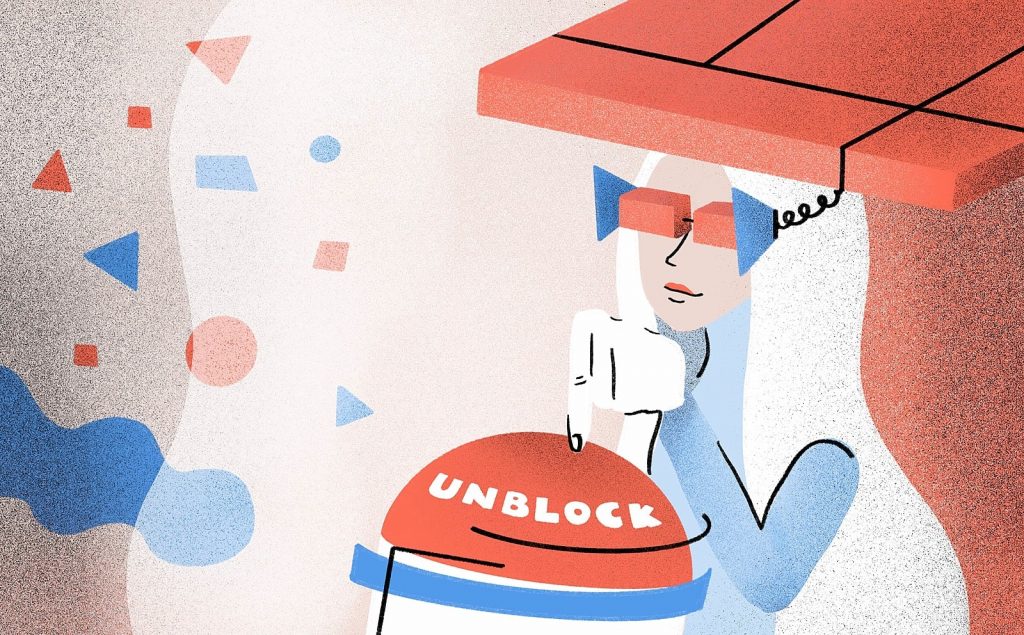Personal Growth Habits Every Designer Should Master
Personal growth is becoming better, wiser, and more compassionate. It's about taking responsibility for all of your thoughts and actions. Growth is more than changing your outward appearance or material possessions; it's about living a life of integrity, love, and purpose.
In this article, you'll discover the personal growth habits of some of the world's most creative minds. Discover what works for them. You'll learn why some of these greats choose to take a day a week away from their design career to pursue their passions. It'll also help you develop growth habits that ultimately lead to success.
Have you ever felt stuck in a rut, and no matter how hard you try, you can't break out of it? You may have tried to improve your creative skills by reading about design, but you have yet to get further. If so, you may feel frustrated, disheartened, or even bored.
I'm sure you've heard the saying that “creativity is just another form of procrastination.” But is that true? If you think about it, is it better to put your creativity to good use and turn it into something more concrete, like a portfolio, a website, or a business? After all, you can earn a living doing something you love.
The truth is that we all have much-untapped potential within us. But we've become so accustomed to doing things the same way that we fail to recognise that we could do much more.
Today, I'll teach you how to unlock your creativity and turn your ideas into reality.
Table of Contents
What Do We Mean By “Personal Growth”?

Personal growth for designers is often measured by the quality of their designs and creations. But when we think of personal growth, we are thinking more about the experiences of the individual rather than what we can produce or how many people we can help. Personal growth is a continuous process, and the ability to change and grow is critical.
What do you mean when you say “personal growth”? It is the journey of finding answers to questions like “What is my purpose?” or “How can I live a meaningful life?” These are some of the questions you might ask yourself. In addition, you may ask yourself about your skills and strengths. How can you apply these skills and talents to your life?
Why Is It Important?
Growth is essential to design. It's what makes us grow and learn as individuals. We can only achieve meaningful growth by understanding other people's needs and learning new skills.
Designers are often called upon to solve problems and challenges they have never faced. We need to grow by taking on these new roles and responsibilities to thrive. If we refuse to grow and evolve, we will become stagnant and lose our passion.
To be successful, we must continue to develop new skills and abilities. We must constantly seek to expand our knowledge, improve our skills, and grow as individuals.
To help you grow, we've created a series of questions you can use to assess your personal strengths and weaknesses. Use them to evaluate where you stand today and where you want to be tomorrow.
How Can I Evaluate My Strengths and Weaknesses?
The first step towards growth is evaluating your strengths and weaknesses. If you're struggling, take a moment to review your history and determine what's worked in the past.
Consider your successes and failures, and evaluate the factors that influenced these events. Ask yourself the following questions to help you identify your strengths and weaknesses:
- What have I accomplished that is meaningful?
- What experiences have made me the person I am today?
- What have I learned from my mistakes?
- What have I learned from my successes?
- What do I like doing?
- What do I dislike doing?
- What do I feel comfortable doing?
- What do I feel insecure about?
- What are my biggest challenges?
- Do I rely on others to get things done?
- What are my most significant weaknesses?
- What are the areas that I need to work on?
- How Can I Improve Myself?
Now that you've evaluated your strengths and weaknesses, it's time to use this information to set goals and plan for growth. Look at the items above, and identify your strengths and weaknesses. Think about what you want to accomplish and what you are afraid to try.
What are your goals for the next six months? How will you evaluate your progress? What will be the first steps you take to improve yourself?
By setting goals, we make it easier to keep track of our progress. By identifying weaknesses and addressing these issues, we can grow.
How Do I Grow My Career?
Career growth is often associated with having a stable position. While this is important, it doesn't necessarily mean that a position is the only way to grow.
If you want a more meaningful career, consider exploring new and different opportunities. The same principles apply here, just in a different context.
- What do you like to do?
- What are your passions?
- What is your dream job?
- What do you enjoy?
- What would you do for a living if money were no object?
- What are your talents and interests?
- What would you do if you knew you would never have to worry about money again?
Think about these questions and what new positions you'd like to try. What are you willing to give up in exchange for the chance to take on a new position?
Why It's Important To Have Goals

You are headed towards success if you have a business vision or goal. I know this seems obvious, but people tend to get busy with day-to-day responsibilities and must remember their big-picture goals. You need to have goals to measure your success and progress. In other words, you are setting yourself up for failure without a clear vision and plan of where you are going.
I'm sure you've heard this before, but if you are a graphic designer/artist, your job is building a brand and building a business around that brand. Your job is to build a successful business. This means you must have a clearly defined vision of where you want your business.
When creating a vision for your business, it is crucial to think about the following:
- Whom do you want to work with
- What do you want to offer your clients
- What type of product or service will you provide
- How will you attract your target audience
- Where do you want your business to be in 3-5 years
- What is the ultimate goal for your company
A great example of someone with a clear vision is Steve Jobs. He had a clear vision of what he wanted his company to be, and it helped him tremendously in guiding Apple and Pixar.
You could think about many more things, but these should help you get started on your way to building your business vision.
How Designers Can Overcome Design Blocks

Developing creative and thoughtful design solutions is the best way to overcome design blocks.
There is no “perfect” design, but the best designers constantly strive to develop innovative and functional designs, even under strict constraints.
“Design is a series of compromises,” says Thomas Cianflone, partner at the New York architecture firm Skidmore, Owings & Merrill. This statement often needs to be interpreted to mean that you shouldn't compromise your design but instead try to make the best possible design. However, it means that a design is always flawed and should be considered in light of the constraints of your project.
For example, the best way to make a chair is not to design a chair but to design the process used to make chairs. By considering the processes involved in creating a chair, the designer can make decisions that will improve the chair, the manufacturer, and the quality of the product.
The same thing applies to any other kind of design. Consider the processes involved in the creation of a car, a computer, or a kitchen. Each product is created through processes involving multiple individuals and many decision-making stages.
For example, to create a car, the designer must consider several aspects, including safety, function, and aesthetics.
Consider the seat's design in a car, and you'll see that the seat is made up of many elements. The designer must consider the design of the seat itself, the cushion, the padding, the belts, the stitching, the paint, and more. Sometimes, a design will work perfectly well in one stage but fail in another. For example, a leather-wrapped seat may look very nice, but it will quickly wear out and need to be replaced.
By considering the full range of the processes involved in creating a product, the designer can identify all of the factors that influence the outcome of the design.
“I think most of us have a sense of how good something is,” Cianflone says. “But most of us also know how it could be better.” To find a way to improve your design, it's essential to know all the processes involved in creating the product.
The first step in this process is to learn everything you can about your subject matter. Spend some time reading books and visiting museums so that you can learn more about the processes involved in designing your product.
Next, review the various stages of the product creation process to identify the factors influencing each stage. The more information you have about the process, the better you'll be able to find ways to make improvements.
The next step is to identify a creative solution to the problem. In some cases, the design process itself can serve as the solution. For example, a car that requires a driver to remove the seat to get in may need a better design. On the other hand, it's possible to make the design process a part of the solution. Sometimes, the best solution to a design problem is to build the product differently.
Think of the seat belt in a car. Many seat belt functions are related to safety, but the seat belt design is more of a convenience feature. For the seat belt to work as designed, it must be in a specific position. To make the seat belt work as intended, you may need to redesign the entire seat to ensure that the seat belt is always in the correct position.
You can apply the same idea to other products, like the design of a kitchen countertop or the shape of a table. Identify the processes involved in creating the product and determine ways to improve them.
Once you've figured out the problems in the design process, it's time to make design decisions. Design decisions are not only influenced by the nature of the product but also on your personal preferences, available resources, and budget. The more you know about your specific situation, the easier it will be to make design decisions that work for you.
If you're working on a small project that doesn't require much research, it may be easier for you to identify a creative solution. However, if you're working on a large project, it's easier to develop a plan that considers the resources available and the constraints of your project.
It's also important to consider the time constraints of your project. If your project has a deadline, it may be tempting to make a decision based on the constraints of the deadline. However, if the deadline is far away, it may be better to take your time and do the research. This will help you make the best possible decision now rather than rushing to make a decision that may not be the best option.
Design is a series of compromises. Each decision involves a trade-off between one aspect and another.
How To Achieve Personal Success

There needs to be a path to becoming a successful designer. But if you're working toward this goal, here are a few tips to get you started.
- Start by being open to learning about design. Read books about graphic design, look through magazines and catalogues that feature well-designed work, watch films set in a creative environment, and listen to audiobooks about creativity.
- Learn about your industry. To work in a particular field, look into its history and current trends. Research the companies and products that interest you and explore their websites, logos, and taglines.
- Look for opportunities. It's never too early or late to begin looking for a job. You might find your dream job by visiting job boards and networking events. If you're still in school, search for internships and volunteer positions.
- Don't limit yourself. Once you know what interests you, explore the world of design. Check online forums, look through the Design Society catalogue, read Design Week's newsletter, and participate in contests and portfolio reviews.
- Try something new. Learn how to use a graphics editing program, write a cover letter, and conduct research. Find a new library or museum to visit. Learn a new language or musical instrument.
- Keep an eye out for mentors. Mentors are people who can help you grow as a designer. They can teach you new skills, advise, introduce you to others, or offer feedback on your work.
- Keep building. No matter your goal, the more you build your skills, the more likely you will achieve them. So keep studying, experimenting, and honing your craft.
The Five Questions That Change Your Life
To live the life you want, you must know yourself well.
This is a question about the five questions I have asked myself in the last three years.
The first question is, “What do I want?” This is the one that comes first.
We always go for what others expect when we don't know what we want. We never dare to be authentic. If we want a different job or go somewhere else, we don't ask ourselves our true desires.
Another question is, “What is my purpose in life?”. This is the most critical question because it gives a sense of direction.
For example, if I want to be a designer and work in a specific environment (a place that I like) to feel fulfilled, I could create a new space to help me achieve my goal.
The third question is, “Who am I?” This question shows the person's personality, and the answer is that you are unique and should always try to keep this in mind.
The fourth question is, “What do I care about?” For some people, it is vital to be involved in activities they like and share with others. Others are interested in working for a cause, helping others or being surrounded by friends.
Finally, the fifth question is, “How does the world see me?” I have often seen people who are confident with themselves and their actions. However, they still need to hear what others think of them. This is because they need to figure out if their actions are correct.
Many books, courses and articles talk about how important these questions are to success in your life.
These questions are relatively easy to answer. However, having a clear vision of what you want is vital to save time and energy in pointless activities.
Conclusion
Personal growth is essential to success in any area of life. And if you're going to grow, you need to learn about yourself.
The first step is to get honest with yourself about where you are. There is a massive difference between knowing that you want to learn a new skill and taking action to improve your skills.
So I encourage you to start thinking about the areas where you'd like to grow. It may be personal relationships, time management, or work/life balance.
When you have a clear picture of where you'd like to go, look back on your past experiences. Did you ever struggle with a skill? What did you learn from it? How did you overcome your struggles?
Sign up for my free email newsletter and discover more personal growth habits for the future!
